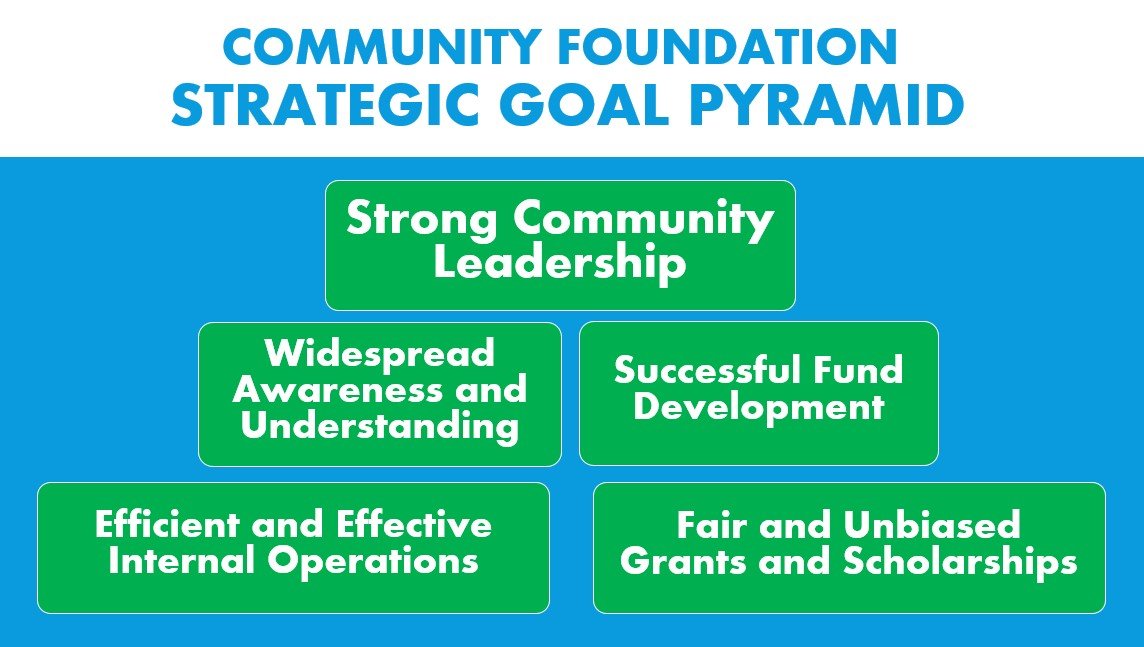Community foundations are complex organizations, so it’s critical that they have a clear strategic direction to focus their time and energy on their most important goals.
While community foundation strategic plans can vary substantially, for most their strategic goals are going to fall into one of five categories.
Efficient and effective internal operations
Fair and unbiased awarding of grants and scholarships
Widespread awareness and understanding
Successful fund development
Strong community leadership
Successful community foundations perform well in each of these strategic areas.
At the most basic level, good community foundations develop and manage efficient and effective internal operations. In a successful organization, qualified staff is recruited and trained to perform well, internal processes run smoothly, and staff works as a well-functioning team.
All community foundations need to have in place a fair and unbiased program for awarding grants and scholarships. This function is critically important and will drive the attitudes of your key stakeholders – community leaders, nonprofit organizations, and donors. A well-understood – and easily accessible -- program for awarding grants and scholarship will help you build the trust you need for long-term success.
Also important to your success is a widespread level of awareness and understanding in the community you serve. Most community foundations describe themselves as “the best-kept secret in town” – but that is not where you want to be. To garner the level of trust you need to serve your community your foundation must be well-known and well-understood.
Critical to achieving your mission is successful fund development. Foundations which attract new funds, and gifts to existing funds, do two things very well: Tell great stories and build strong relationships. You have plenty of wonderful stories to tell: a grant that helped a local charity, or a scholarship that contributed to the success of a student. Tell those stories with passion and enthusiasm.
You will attract more gifts by building strong relationships. Keep in mind that the key to your future growth will be donors who give a portion of their life savings to your community foundation. For a donor to do that, they need to know you and trust you – and you can build that trust with strong relationships.
The ultimate goal of any community foundation is strong community leadership. This leadership can take many forms: assistance for nonprofits, supporting an important community project, or bringing groups together to discuss important community issues, to name just a few examples. When you help to garner community resources to address a critical issue, you improve the quality of life for those you serve.
It may help to think of the five categories of strategic goals as a pyramid – one in which each level of the base must be in place before moving on to the next level.
Every community foundation should have the goals in place for efficient and effective internal operations and a fair and unbiased grant and scholarship program. When those goals are in place, efforts can be made at the next level — to ensure widespread awareness and understanding, along with successful fund development.
The top of the pyramid – after the other goals are in place – is strong community leadership. While this is an area where most community foundations (and their board members) want to spend the most time, it is important the other pillars of strategic goals are functioning well.
Community foundations are complex organizations which can and do pursue many important goals. A well-crafted strategic plan, which can guide your operations, can help you best serve your community.

